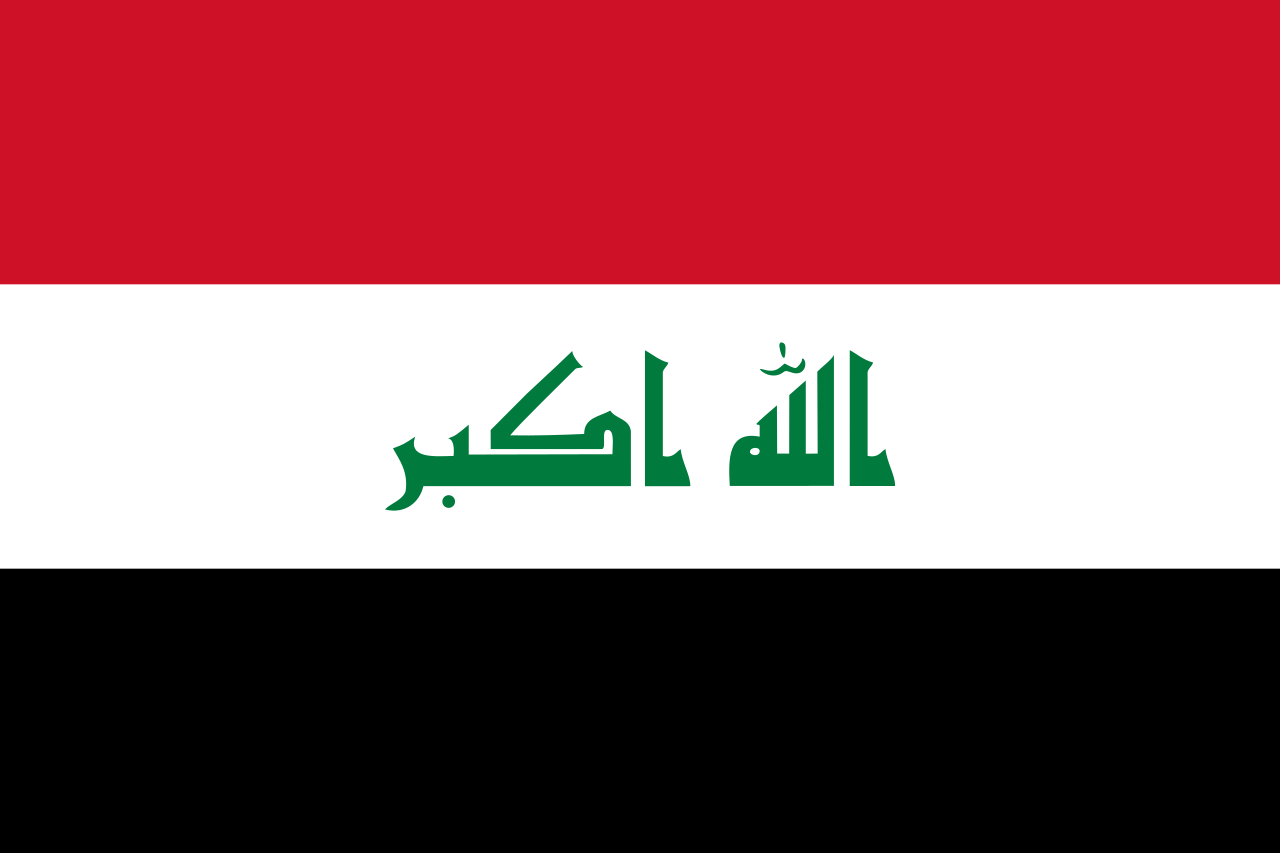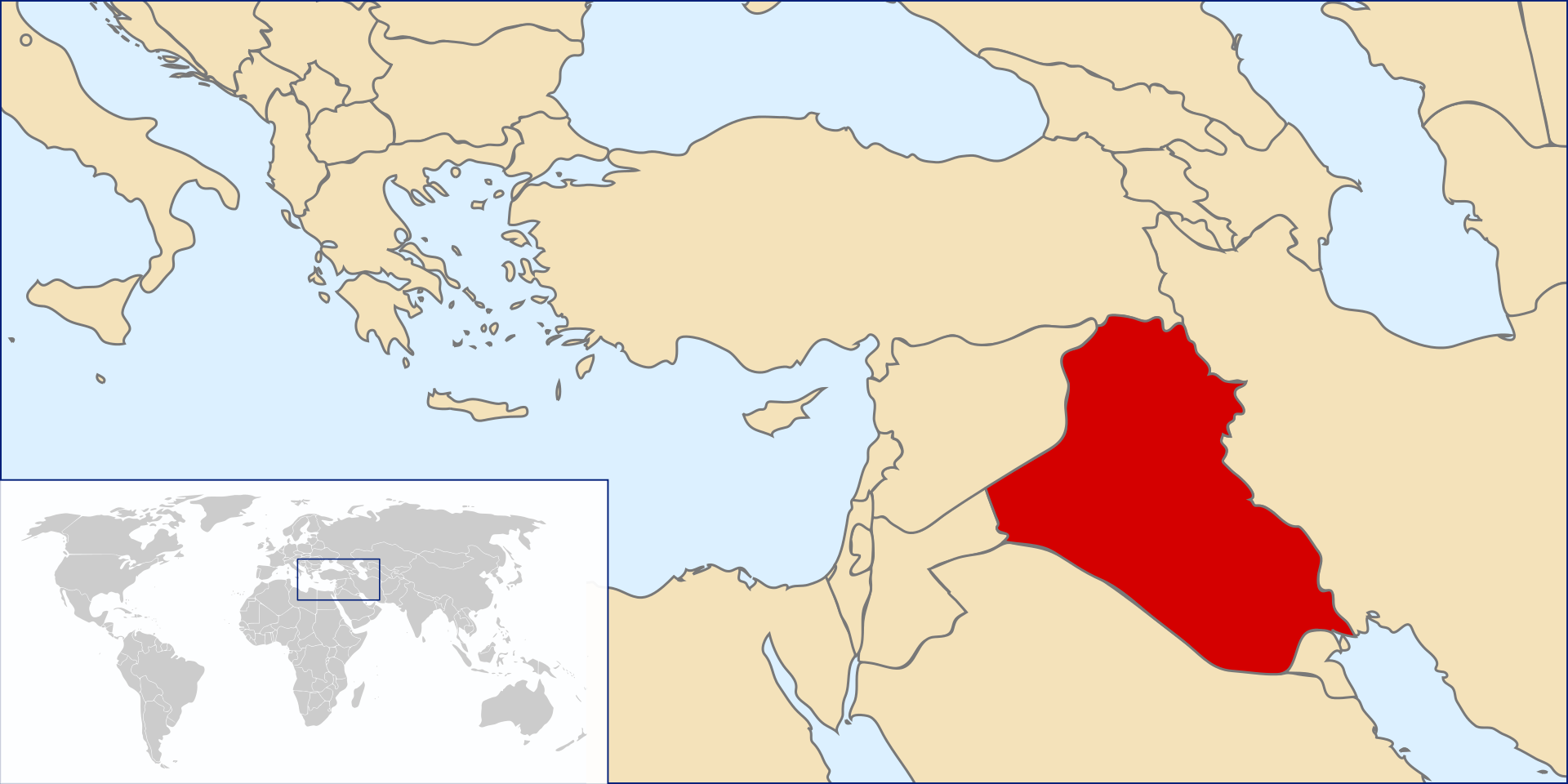
Geography

Source: This image is the intellectual property of Rei-artur. Redistribution under licence CC BY-SA 3.0
Area: 438,317 km2 (0.2% water)
Coastline: 58 km
Terrain: mostly broad plains; reedy marshes along Iranian border in south with large flooded areas; mountains along borders with Iran and Turkey
Highest point: Cheekha Dar 3,611 m (northern Iraq, on the Iranian border)
Climate: mostly desert; mild to cool winters with dry, hot, cloudless summers; northern mountainous regions along Iranian and Turkish borders experience cold winters with occasionally heavy snows
Geographical population distribution: The vast majority of the population resides east of the Euphrates
Natural resources: petroleum, natural gas, phosphates, sulphur
Demographics
Population: 47,100,000 (2025)
Annual population growth: 2.13 % (2025)
Estimated population in 2025: 47,100,000
Age structure (2024)
0‑14 years – ~38 %
15‑64 years – ~59 %
65+ years – ~3 %
Total fertility rate (children per woman): 3.17 (2025 est.)
Birth rate (per 1000 people): ~20.8 (2025)
Death rate (per 1000 people): ~5.3 (2025 est.)
Median age: 20.8 years (2025)
Life expectancy at birth: 72.4 years (2024 est.)
Males – ~70.5 years
Females – ~74.2 years
Net migration rate: ~−1,064 migrants per 1000 population (2025 est.)
Languages: Arabic (official), widely spoken Kurdish
Religious groups: Predominantly Shia and Sunni Muslims
Ethnic groups: Majority Arabs with small minority groups
Economy
GDP: $166.86 bil (2020) GDP per capita: $4,145.9 (2020) GDP annual growth rate: -15.7% (2020) Public debt (% GDP): 44.3% (2019) Inflation (CPI): -0.6% (2020) Unemployment: 13.7% (2020) Imports: $43,100,000,000 (2018)10 largest import partners (% total imports - 2018): UAE 26.2%, Turkey 19.3%, China 18.3%, South Korea 4.43%, India 4.3%, USA 2.23%, Germany 1.98%, Jordan 1.64%, Netherlands 1.54%, Saudi Arabia 1.51% Exports: $87,400,000,000 (2018)
10 largest export partners (% total exports - 2018): India 23.9%, China 22.8%, USA 12.1%, South Korea 9.7%, Greece 5.63%, Italy 4.71%, Singapore 3.74%, Netherlands 2.75%, Spain 2.21%, Taiwan 1.79% Global Competitiveness Report (World Economic Forum)
- Index of Economic Freedom (Heritage Foundation)
- Income Inequality Index (Gini – World Bank)
29.5% (2012) Prosperity Index (Legatum Institute)
42.96/100 (2021 – position 141/167)
Military Power
Personnel under the Ministry of Defence : 200,000 Army/Aviation Command/Special Forces:190,000 Navy: 5,000 Air Defence Forces: 5,000National-Level Security Forces:25,000 Iraqi Counterterrorism Service: 10,000 Presidential Brigades: 10,000 Prime Minister’s Special Forces Division: 5,000
Ministry of Peshmerga:150,000-plus Regional Guard Brigades:35,000 Unit 70 Forces: 50,000 Unit 80 Forces:70,000
Popular Mobilization Forces: 100-106,000 (2020-21)
Defence expenditure (%GDP): 4.1% (2020)
Politics and Government
Form of government: Federal parliamentary republicPresident: Abdul Latif Rashid (since 17 October 2022)
Prime Minister: Mohammed Shia’ al‑Sudani (since 27 October 2022)
Next elections: Parliamentary elections 2022
Rule of Law - Human Rights
Corruption Perceptions Index (Transparency International)21/100 (2020 - position 160/180) Rule of Law Index (World Justice Project)
- Global Terrorism Index (Institute for Economics & Peace)
9.241/10 (2019 – position 2/163) Fragile States Index (Fund For Peace)
96.2/120 (2021 – position 20/179) Democracy Index (Economist Intelligence Unit)
3.62/10 (2020 – position 118/167) Press Freedom Index (Reporters Without Borders)
55.57/100 (2021 – position 163/180) Freedom in the World Index (Freedom House)
41/100 (2021)




